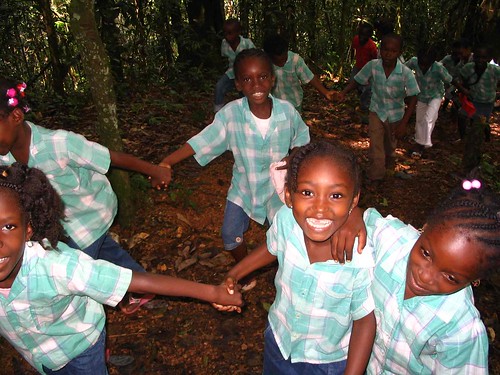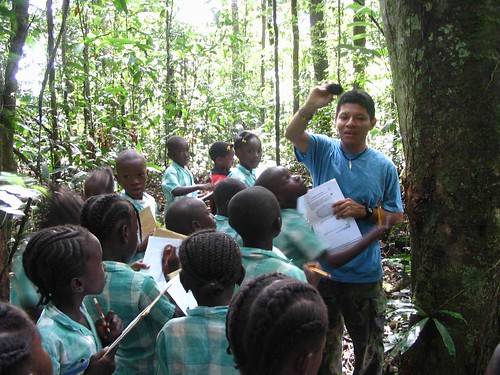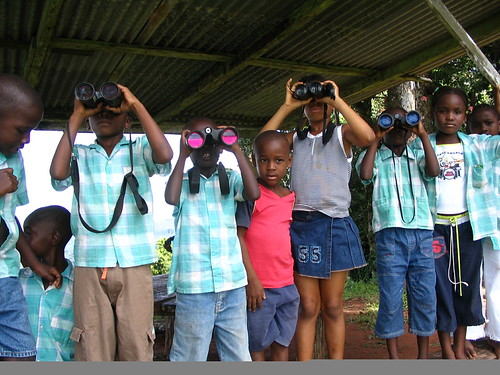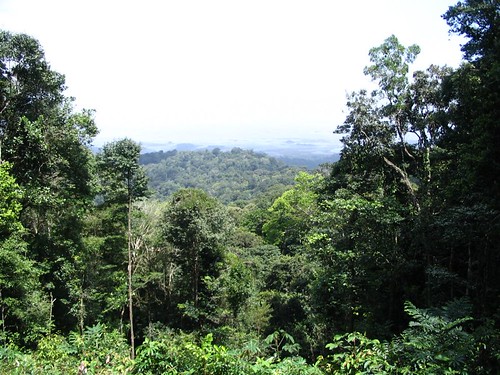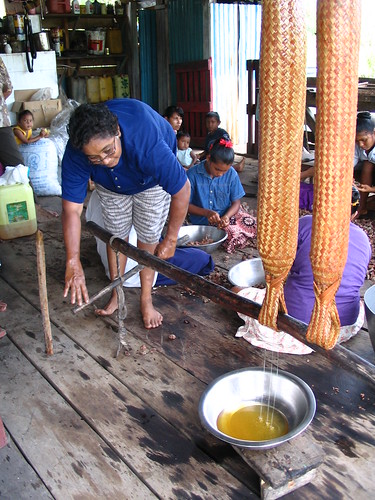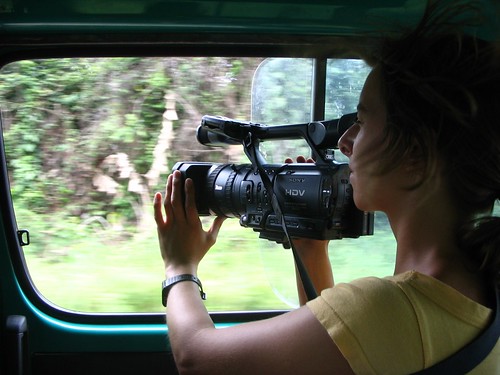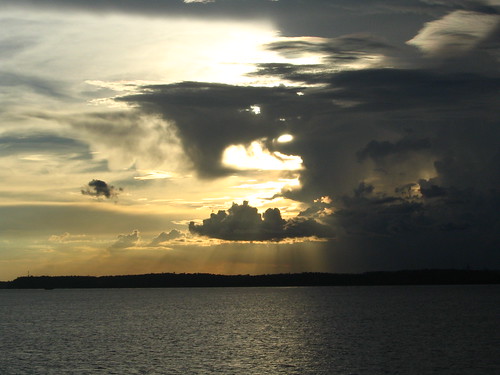September 27, 2005
September 17, 2005
Pelican sunset in Choroni, Venezuela
Well, we finally made good our glorious exit from Suriname and are both delighted to be on the move again. We were becoming increasingly twitchy after we decided to stay on for a bit longer than we really wanted to. But three weeks is three weeks. Aint so bad. With our flights paid for and some hard graft behind us, we flew to Port of Spain, Trinidad. An odd journey, but as I probably mentioned before, it’s easier to fly to Holland from Suriname than to the rest of Latin America. We managed to get a quick look at the mountains at dawn, standing outside the airport waiting for our connection. Very beautiful, but we had our hearts set on Venezuela and with good reason. Somewhat exhausted we arrived in Caracas the following day and were whisked through the concrete jungle that is Venezuela’s capital. Caracas turned out to be very expensive, relatively, so after a day or so of failing to find some much needed culture (the contemporary art gallery, supposed to be the best in the continent was closed for ten days – we ended up going to a kids museum!) we decided to head for the beach. We did manage a look at the Plaza Bolivar (and a chatted with some local old boys who were sipping thimbles of coffee while getting a shoe shine), but much of the colonial architecture and history of the city was demolished in the 70s oil boom in favour of concrete skyscrapers. That said, we had a great night at an English bar and the sounds of some classic Brit music (Beatles, Pink Floyd: We don’t need no education) – I ended up dancing arm in arm with a couple of really friendly Venezuelan lads and have to admit to being the drunken instigator of a sing-song rendition of Sting’s classic I’m an Englishman in… Venezuela. You can’t take me anywhere. The day before the beach we chanced our arm on the Swiss-run teleferico which soars 1,600 meters up the mountain that dominates the Caracas skyline. I’m not the biggest fan of cable cars, but it really was something else. Jaw-dropping, panoramic views of the huge, sprawling city combined with Caribbean ocean vistas and a path ambling down to a mountain village and the sea. The following day we were haring off to the coast after a two hour wait for our connection. In Latin America you need patience - we got chatting with a couple from Coventry. We got on to the diablo ride over the mountain and the bus broke down thirty seconds after pulled out of the station. But after a fiddle under the bonnet we were treated to a dramatic drive through cloud and rainforest, horns blaring at every turn with the sounds of salsa blasting from the speakers of the bus. Two hours later we arrived in Choroni and Puerto Columbia, where we are now. It’s paradise. Palm-lined, Caribbean beaches and aquamarine water with mountains looming in the distance. Needless to say we were slightly sunburnt after the first day. Mad dogs and Englishmen. Hiring a beach umbrella here is an absolute necessity. And the waves are hardcore. I have unwittingly managed to pull off several gymnastic somersaults in the sea. Well, that’s all so far. It looks like we might be making the trip to Columbia now after all. Two travellers have given us the low down on some wonderful beaches and the world’s ‘most inexpensive’ scuba diving. It’s something I have always wanted to try. |
September 02, 2005
When the work is done...
We have finished most of the filming (more than 30 hours) we intend to do while we are in Latin America.
Further updates on this sites will be primarily for photographs.
July 22, 2005
Wanwan futu e doro bergi
As part of our education project in the tropical rainforest of Suriname, South America, we organised a field trip for 334 schoolchildren. Most were between six to 10-years-old and were from the village of Brownsweg.
This transmigration village, 13 km from Brownsberg mountain nature park, was formed from 5,000 people from several maroon tribes that formerly lived along the Surinam river. In 1964 they were relocated by the Surinamese government when the gates of the Afobaka Dam (Afobaka means grandmothers back) closed, forming the Brokopondo Lake. The hydro-electric dam now powers the capital, Paramaribo. Brownsweg has since become characterised by high unemployment and the prevalence of illegal gold-mining.
Almost three quarters of the youngsters from the village, despite living so close to the mountain, had not set foot on its slopes previously. Thanks to funding from WWF, we organised transportation and food, an interpretive trail through the rainforest, an educational video on the biodiversity of Brownsberg, a viewing of the village from the mountain using binoculars (for most this was also a first) and an art project including two murals. We also filmed HDV footage, which we hope will prove persuasive in future funding negotiations. (Wanwan futu e doro bergi translates to Step by step we climb the mountain).
June 05, 2005
Rainforest School
We are also developing an education program and publicity material [such as the poster above] for Stinasu, the foundation for nature conservation in Suriname. The education program and documentary focus on animal behaviour, rainforest ecosystems and conservation issues such as the impact of gold mining on vegetation, biodiversity and health. We are also working with leading primate anthropologists to capture footage (HDV equipment) of species unique to the Guianas such as the bearded saki as well as the spider monkey, the white faced saki, howler monkey, capuchin and other animals. We are in Suriname on Brownsberg mountain [on the link map below near Brownsweg]:
Click here for a map.
May 02, 2005
Amerindians and Waini River
March 28, 2005
Sea Turtles
Working draft [first]
Programme Outline for film
In most cases voice overs will be kept to a minimum and only used when interview material is not available. Interviews will be in native languages when the English is not suitable and subtitled for viewing.
- Introduction: the geography and the situation.
- Stinasu: the history of the area, the issues and the work being done.
- Monitoring and a description of the different turtle species.
- Examining the main problems: the impact of tourism, fishing and poaching.
- Conclusion.
1. Introduction: the situation and the geography.
- Shots of Galibi and Matapica area.
Voice over/introduction: "Suriname is on the northern Atlantic coast of South America and is bordered by French Guyana to the east, Brazil to the south and the former British Colony, Guyana in the west. Most of the coast is covered by mangrove forests, interspersed by isolated sandy beaches. It is on these beaches that sea turtles migrate to lay their eggs as they have done every year for centuries.
- Images of turtles laying eggs.
Voice over/introduction: "There are four species of marine turtles nesting in Suriname. They are the Green Turtle (Chelonia mydas), the Olive Ridley (Lepidochelys olivacea), the Leatherback (Dermochelys coriacea) and the Hawksbill (Eretmochelys imbricafa). As one of the last major sites for Leatherback, Suriname is of international importance in terms of the protection of marine turtles. The Galibi Nature Reserve is also one of the most important nesting sites in the Western Atlantic for the Olive Ridley population. While all of these species are endangered, although the most common species found in the area is the Green Turtle and the Leatherback."
2. Stinasu: the history of the area, the issues and the work being done.
- Interview explaining Stinasu's work and history.
- Cut with shots of research centre into images showing monitoring process.
- Interview with WWF Guianas.
- Interview with a field monitor, explaining the monitoring process while carrying out a health check.
- Images of Green turtles.
Voice over/interview "The Green turtle is locally known as 'Krape'. It is recognised by its round, blunt beak and [fill from interview and up-to-date research]. Many of the turtles feed on sea grass and algal fields off the Brazilian coast, before making their way north, nesting on the coast of Surname and the Guyanas. The Green turtle population is relatively stable."
- Images of Leatherbacks.
"Unfortunately the same cannot be said for Leatherback turtle which is critically endangered and threatened with extinction. Suriname has one of the largest Leatherback nesting colonies in the world. Each year, around [fill from interview and up-to-date research] individual turtles nest in the area. The Galibi Indians commonly refer to these turtles as 'Aitkanti'. These giant turtles are among the largest living reptiles. They are extraordinary creatures that can grow up to [fill from interview and up-to-date research] in length and weigh up to [fill from interview and up-to-date research]. They dive as deep as 1300 meters and largely feed on [fill from interview and up-to-date research].
"While their numbers are in sharp decline, the nesting numbers recorded in Suriname show a remarkable increase since 1999. From more than 10,000 nests in that year rising to 30,000 nests in 2001 [CHECK, conflicting information from reports]. This makes conservation of the Leatherback nesting areas in the Suriname essential for the survival of the species."
- Images of Olive Ridley turtles.
"It is generally accepted that Suriname has the most important nesting beaches in the Atlantic for the Olive Ridley turtle. But tragically, while 3,290 nests were counted on the beaches in 1968, by 1989 the number had dropped to only 598, a dramatic 80 per cent decrease. [Update with more recent figures]. This species is known to get caught and drown in the nets of shrimp trawls."
- Images of Hawksbill turtles.
"The Hawksbill Turtle or 'Karet' only nest in the region occasionally. There are rarely more than 30 nests a year and relatively little is known about the species as they are difficult to study [WHY? Because of numbers?]."
4. Examining the problems: the impact of tourism, fishing and poaching.
Voice over: "The problem of poaching is a very real one. It is still one of the main threats to the turtle's survival. In order to enforce the anti-poaching laws the foundation for nature preservation in Suriname, Stinasu, works closely with Nature Conservation Division, a government organisation who enforce conservation laws and patrol nesting sites to stop poachers raiding eggs."
- Interviews with manager and wardens from NCD.
- Cut to into scenes of night and boat patrols.
Voice over: "The issues of poaching are extremely sensitive and are not simply about catching criminals. The existence of the reserves and laws to stop poaching have not been welcomed by everyone. The resident Amerindian people have lived in the area for centuries and have a long tradition of collecting turtle eggs, which are part of their traditional diet. In fact, they have argued that they have traditional rights to collect eggs as a natural food resource."
- Archive footage
Voice over: "In the 1960s eggs were harvested during arribas (or mass nesting events) by the peoples of the two nearby villages. Villagers did not take kindly to being forced to stop collecting the eggs and in 1998 armed locals forced Stinasu staff off the area and monitoring was put on hold for two years.
"Although poaching has been reduced in the area through the work of Stinasu, the number of nesting females rapidly fell until in 1989, to just 424 - a fall of more than 80 per cent in two decades. During the peak season of 1995, more than 40 per cent of Olive Ridley eggs were poached, despite a ban on harvesting eggs [more up-to-date figures required]."
- Interview with Amerindian village chief.
- Cut into shots of the Amerindian village, fishing and daily life.
Voice over: "Now, the area is much more peaceful and in balance. Education projects are in place to ensure that everyone understands the reasons for conservation laws and the importance of preserving the nests. It is important that everyone benefits from the reserve, so that the area and the turtles can be preserved [more detail on Amerindian involvement needed]."
- Interview with captain of shrimp trawler.
- Cut into shots of shrimp trawler and images of TED (Turtle Exclusion Device).
Voice over: "Fishermen's nets pose a real danger to sea turtles. As fishing increases in the area so does the incidental catch of sea turtles. It is one of the main hurdles to sea turtle conservation. [More research information required]."
- The impact of tourism; visual of tourists watching turtles.
- Vox pops with tourists and tour guide.
5. Conclusion.
Close.
March 22, 2005
Confirmed filming dates
Confirmed diary dates for filming include:
April 1 - Turtle egg laying and conservation at the Galibi reserve in Suriname.
April 17 - Filming at Shell Beach in Guyana. Following a group of Amerindian locals newly trained in conservation techniques as they begin to monitor a nearby turtle sanctuary.
Organisations who are helping with filming include:
WWF
Stinasu
Guyana Marine Turtle Conservation Society
March 11, 2005
Jungle Boat Trip
The boat from Belem to Manaus is now an almost legendary trip through Brazil to the jungle. This film of the five day trip sees foreigners sleeping in hammocks alongside local people in a journey down the Amazon river. If you are interested in this film please email Louise.




